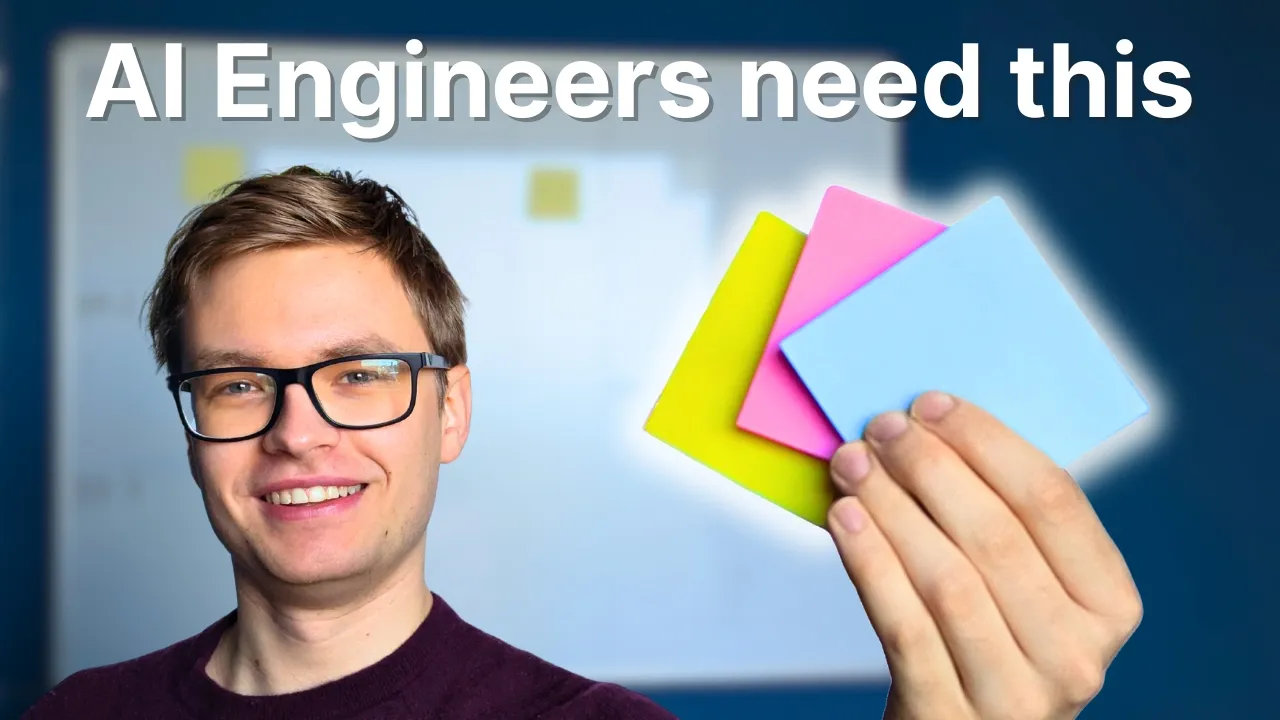The Sticky Note System That Transformed My AI Engineering Career
In an industry dominated by digital tools and virtual workflows, it might seem counterintuitive that one of the most powerful productivity systems for AI engineers involves colorful pieces of paper. Yet this simple analog approach transformed my ability to manage complex AI projects and contributed significantly to my advancement to senior engineer status.
The Problem with Digital Project Management
Digital project boards have become the standard for team collaboration in tech. They organize work by project phase, track assignments, and provide team-wide visibility. However, these tools often fail at something crucial: helping individual engineers manage personal priorities across multiple projects.
The reality of AI engineering work involves juggling competing priorities—perhaps you’re training models for one project while debugging latency issues for another, all while colleagues ping you for assistance with their own challenges. Digital boards excel at the team view but struggle to answer the critical daily question: “What deserves my focus right now?”
This prioritization gap leads many engineers into a productivity trap. Without clear personal priorities, we tend to:
- Context-switch frequently between different projects
- Respond reactively to incoming requests
- Lose opportunities for the deep focus that complex AI work demands
- End days feeling busy but uncertain about meaningful progress
A Three-Column System for Clear Priorities
The breakthrough came when I created a physical sticky note board with three distinct columns:
- Project Tasks: Organized by project (limited to three concurrent projects)
- In Progress: Work that’s actively underway but might have dependencies or blockers
- Today’s Focus: The 1-3 specific tasks selected for focused attention today
This system works by translating team-based digital project items into personal sticky notes. Each note represents one discrete task that moves physically across the board as its status changes.
The Psychology Behind Physical Task Management
The effectiveness of this approach isn’t just about organization—it leverages powerful psychological principles:
Enhanced Commitment: The physical act of writing and moving notes creates stronger mental commitment than clicking digital checkboxes. This triggers what psychologists call “implementation intention,” where the concrete action of handling the note strengthens your resolve to complete the task.
Reduced Cognitive Load: Digital systems often present too many options simultaneously. A physical system with limited space naturally constrains the number of concurrent tasks, reducing decision fatigue and the mental taxation of task-switching.
Tangible Progress Indicators: Seeing completed notes accumulate in the “Done” section provides concrete evidence of progress. This visible accumulation activates our brain’s reward centers more effectively than digital completion markers, creating a virtuous cycle of motivation.
The Critical Focus Technique
Perhaps the most powerful element of this system is almost laughably simple: placing a single sticky note directly on your monitor. This physical reminder creates a singular focus point that helps maintain concentration on high-impact work.
This technique works because it:
- Creates a constant visual reminder of your priority
- Serves as a physical barrier to digital distraction
- Harnesses the psychological principle of “environmental cues” that shape behavior
- Provides immediate satisfaction when you can physically remove it upon completion
From Physical Tasks to Career Advancement
The resulting improvement in focus and execution quality directly contributed to a dense contribution graph—over 1,800 significant contributions in 2024 alone. More importantly, this system freed mental capacity for higher-level architectural thinking, which is often what separates senior engineers from their junior counterparts. Understanding how to advance from beginner to senior AI engineer requires mastering such productivity systems that enable sustained high-level work.
The sticky note system didn’t just organize tasks—it created the mental space and focus needed to elevate the quality and impact of my work. In AI engineering especially, where complex problems require sustained cognitive effort, this ability to maintain deep focus on meaningful tasks becomes career-defining. For those looking to build an impressive AI engineering portfolio, consistent focus on high-impact projects is essential for creating work that stands out to potential employers.
To see exactly how to implement these concepts in practice, watch the full video tutorial on YouTube. I walk through each step in detail and show you the technical aspects not covered in this post. If you’re interested in learning more about AI engineering, join the AI Engineering community where we share insights, resources, and support for your journey. Turn AI from a threat into your biggest career advantage!

